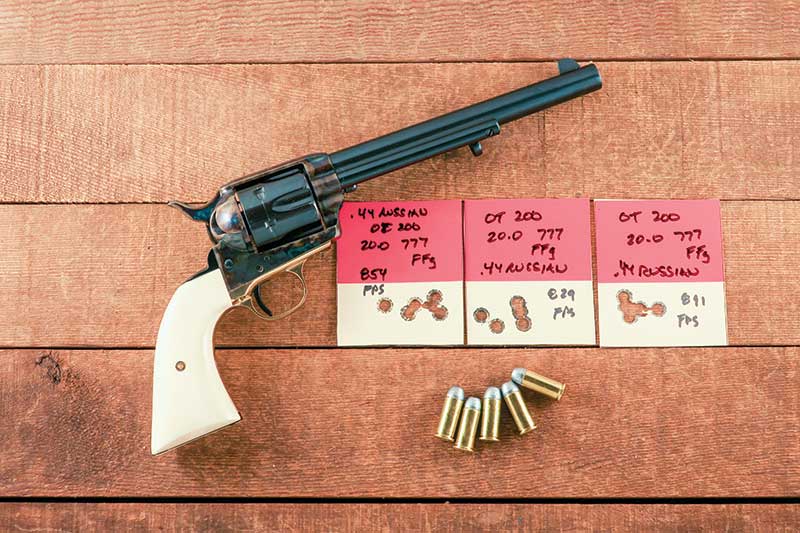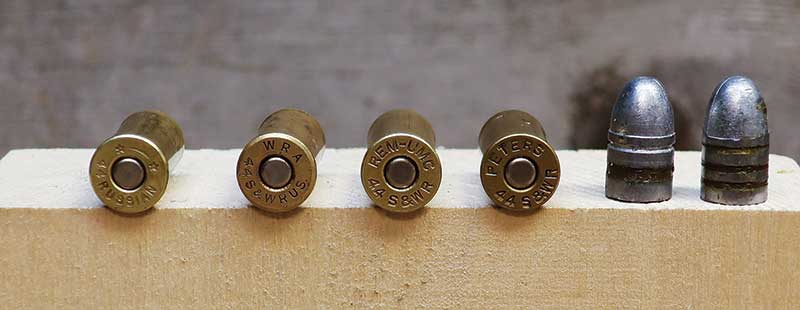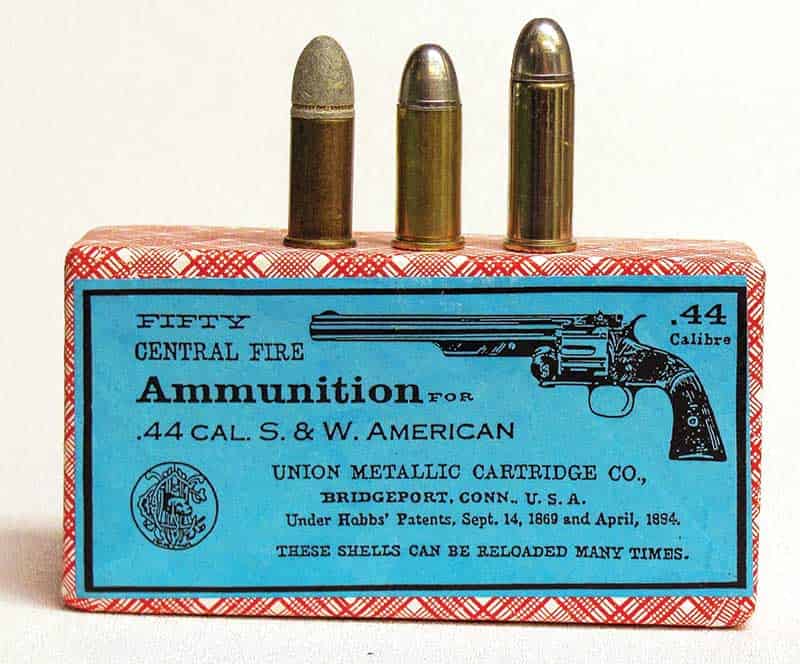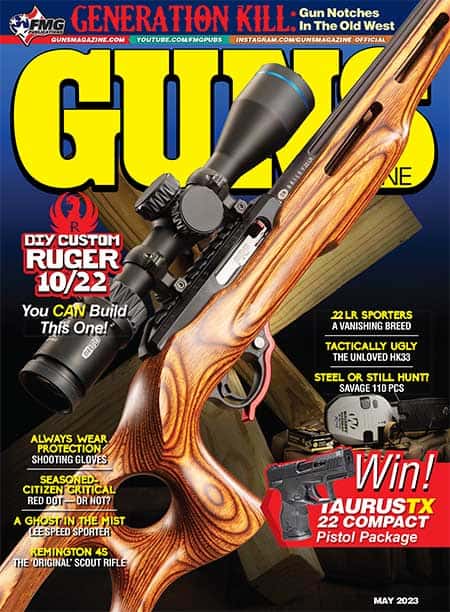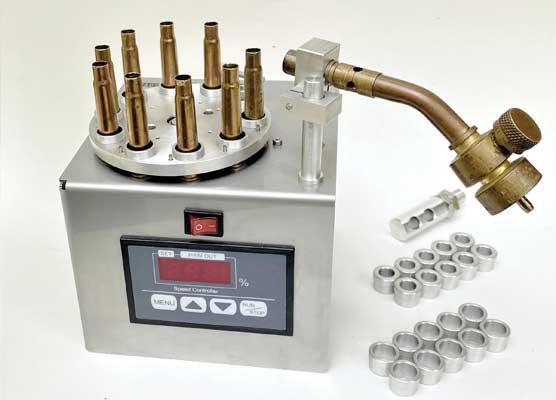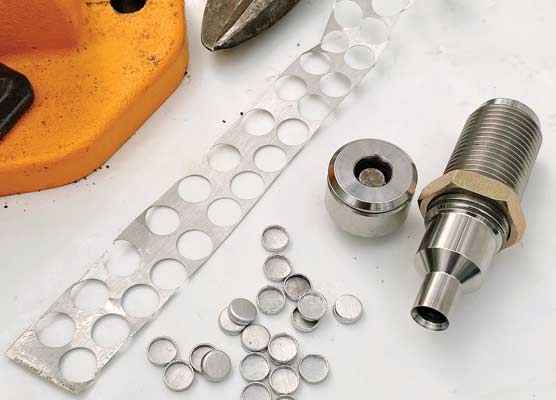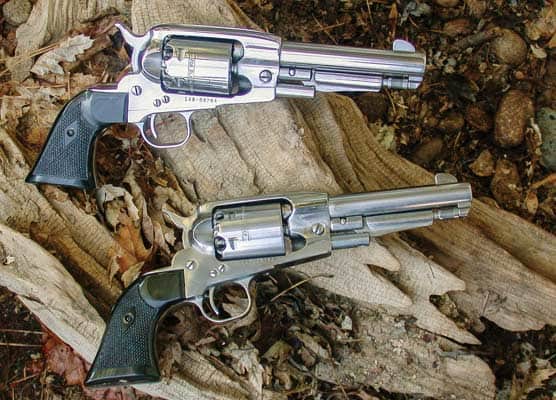Black Powder And The .44 Russian
Joining The Revolution
The Smith & Wesson Model #3 American was not only the first big-bore cartridge-firing sixgun, it was also the first cartridge revolver to be adopted by the United States Military. Up to this point, it had mainly been outfitted with the Colt 1860 Army percussion revolver.
The American Military was the first group to adopt the .44 American, however, Smith & Wesson was about to have a much larger order. Daniel Wesson was visited by his Imperial Majesty the Czar of all the Russias. The Czar wanted weapons for his army and planned to equip both his cavalry and artillery with Smith & Wesson revolvers.
Not only would the Russian order give Smith & Wesson a great financial boost, the Russians were about to make major improvements to both the revolver and ammunition that would have far reaching and lasting effects.
The Russians were much more serious than the Americans about using these new cartridge-firing weapons and ordered 150,000 American Revolvers.
Changes In Attitudes
However, the Russians made changes. The backstrap of the American was changed to better control recoil but the most significant change was the ammunition. These changes the Russians made gave us the model for all currently produced sixgun ammunition. Just as with the .22 rimfire, Smith & Wesson used a heeled bullet in their .44 American. Instead of the heeled bullet, with a base smaller in diameter than the rest of the bullet, the Russians insisted upon a bullet of uniform diameter. This was a most significant step forward and the new cartridge was known as the .44 Russian.
I thought, erroneously, the Russians also went from an outside-lubricated to an inside-lubricated bullet. However, we find the following in the book Centerfire Pistol And Revolver Cartridges (1948) by White and Munhall. “Credit is often given to the Russians for having designed the first inside-lubricated bullet. This is a false belief, since the original Russian cartridges were outside lubricated. As a matter of fact, .44 Smith & Wesson rounds made in Russia as late as 1893 were still of the outside-lubricated type. It was not until 1887 that the lubrication was placed in the cannelures covered by the case wall. This modification is reported to have been introduced by the Union Metallic Cartridge Company, following the suggestions of A.C. Gould, editor of Shooting & Fishing Magazine.”
The .44 American utilized a cartridge case 0.90″ in length with a bullet diameter of 0.434″ weighing approximately 200 grains and using a black powder charge of anywhere from 23 to 25 grains with a muzzle velocity of 650 fps. The improved .44 Russian cartridge lengthened the case to 0.97″ with a powder charge of 23 grains of black powder under a round-nosed bullet weighing approximately 245 grains. This is the same bullet that would be used in the .44 Special arriving in late 1907.
With the increased bullet weight, longer case and decreased powder charge, muzzle velocity actually went up 100 fps and muzzle energy was increased from 200 to 316 ft. lbs. Apparently the heel-type bullet of the .44 American allowed for excessive blow-by and resulting loss of velocity.
The Platform
Original Model #3 Russians were produced from 1874 to 1878 and may be tough to find in good shooting shape without commanding high collector dollars. However, Navy Arms was the first importer to offer an excellent-shooting replica of the New Model Russian. The Navy Arms New Model Russian or Model #3 Russian is a faithful copy complete with the very small sights of the original and is finished overall in a deep blue-black finish set off with a case colored hammer, trigger guard and locking latch.
The Model #3 Russian is produced by Uberti with factory stocks of smooth European walnut. However, my personal Navy Arms New Model Russian has been fitted with Ultraivory grips from Eagle Grips. Ultraivory, while a synthetic material, is very close to real ivory in appearance with milky white color and ivory-type grain. They also provide a good contrast to the dark blue finish of the New Model Russian.
Not only was the .44 Russian available in Smith & Wesson sixguns, others — most notably Colt — also chambered their Single Action Sixgun for the Russian. When the .44 Special arrived, Colt began marking their barrels “RUSSIAN & S&W SPECIAL .44.” In recent times, United States Patent Firearms offered their Italian replicas as USPFA and their American-manufactured single actions from USFA so marked. Most of my experimenting with the .44 Russian is done with the Uberti-produced Model #3 Russians or the USPFA .44 Special/.44 Russian using both 200- and 245-grain bullets
Recipes
The .44 Russian proved to be an exceptionally accurate cartridge and noted shooters of the day set many records using the Smith & Wesson New Model #3. Way back when, hearing about the noted accuracy of the .44 Russian, I decided to see it for myself. I loaded cartridges as close as I could to the original black powder loading with a 245-grain round-nosed bullet and fired 25 rounds through a 7 ½” Colt Bisley Model .44 Special I had rescued by using a Christy cylinder and a Colt barrel. Bullets were lubed with a formula designed for black powder loads and the whole combination gave me a group with all 25 rounds in the 10-ring.
Some of my most accurate loads using the USPFA .44 include the following. First with the Oregon Trail 240-grain RNFP over 23 grains of Goex FFg yields a muzzle velocity of right at 800 fps with a 3/4″ group while the same powder in FFFg granulations is right at 765 fps and a 7/8″ group. Switching to the Lyman original #429383 round-nosed bullet with 20 grains of Pyrodex gives groups just over 1″ and a muzzle velocity of 775 fps. Going with the lighter 200-grain RNFP bullet, 20 grains of Triple-Seven FFg results in right at 900 fps and a group of 1″ while 23 grains of Goex FFg gives the same accuracy with a very pleasant shooting 725 fps.
Starline offers excellent .44 Russian brass in these days. I pretty much follow the same regimen loading .44 Russian with black powder as I do all other sixgun cartridges. Namely, cases are full-length sized, the case mouth expanded, a magnum primer seated and then powder charges use the Lee powder dippers or a brass flask with a spout of the proper size.
These spouts are available in increments of five grains and I keep them on hand from 15 grains up to 40 grains. As with all black powder cartridges, the best method for keeping powder fouling minimal is using a quality black powder lube. However, when using bullets such as those supplied by Oregon Trail, I am careful to swab out the barrel after every cylinder full as the lube designed for smokeless powder does nothing as far as keeping a black powder gun clean.
There was a time when almost all of my .44 shooting was with the .44 Magnum or heavy loaded .44 Specials. These days I find myself more likely to reach for easier-shooting .44 Russians and more often than not those loaded with black powder. There is something almost therapeutic when traveling this path.
